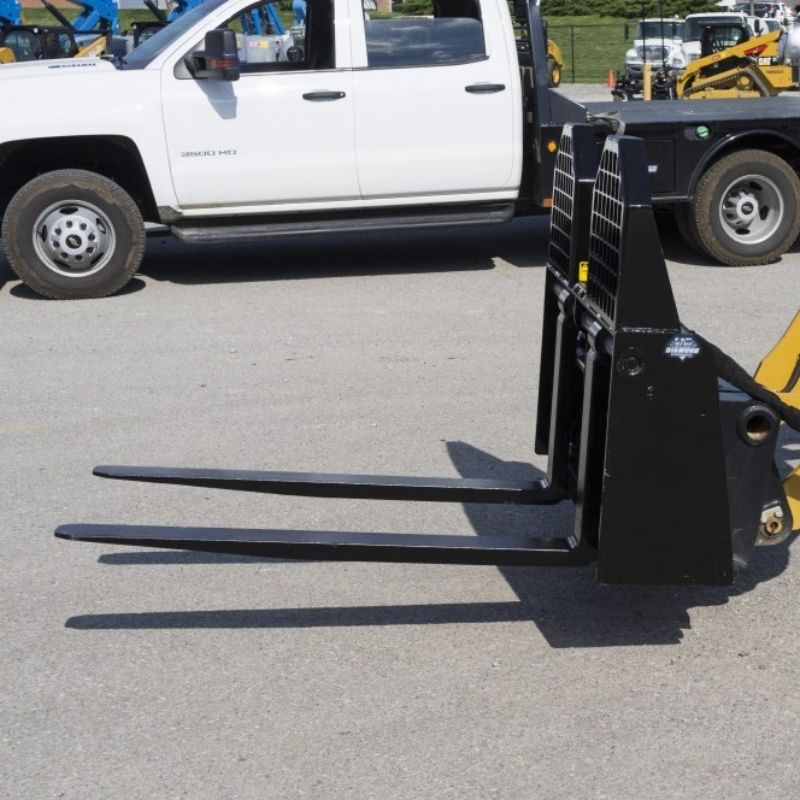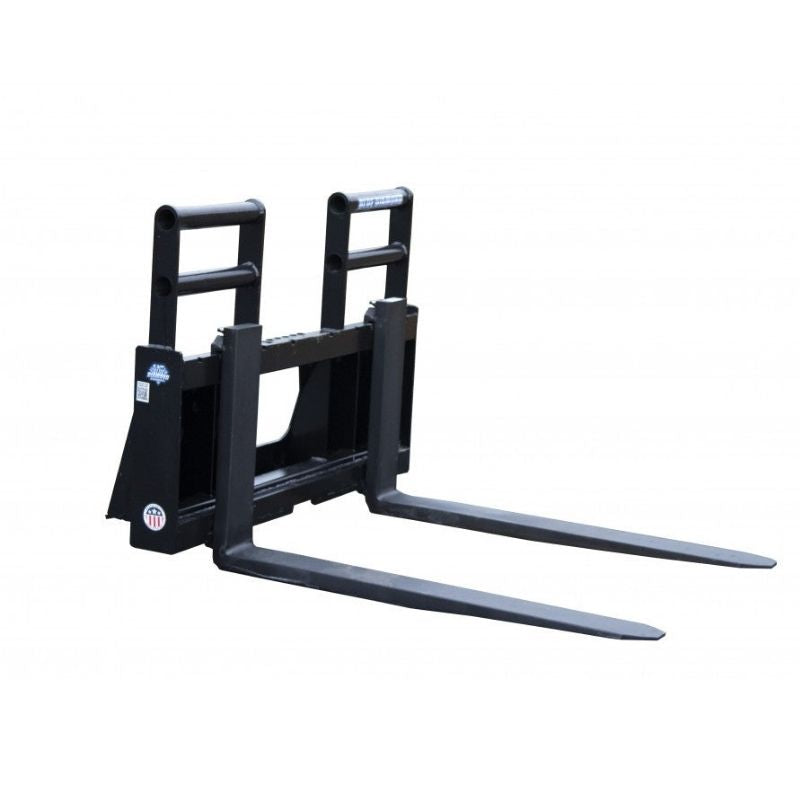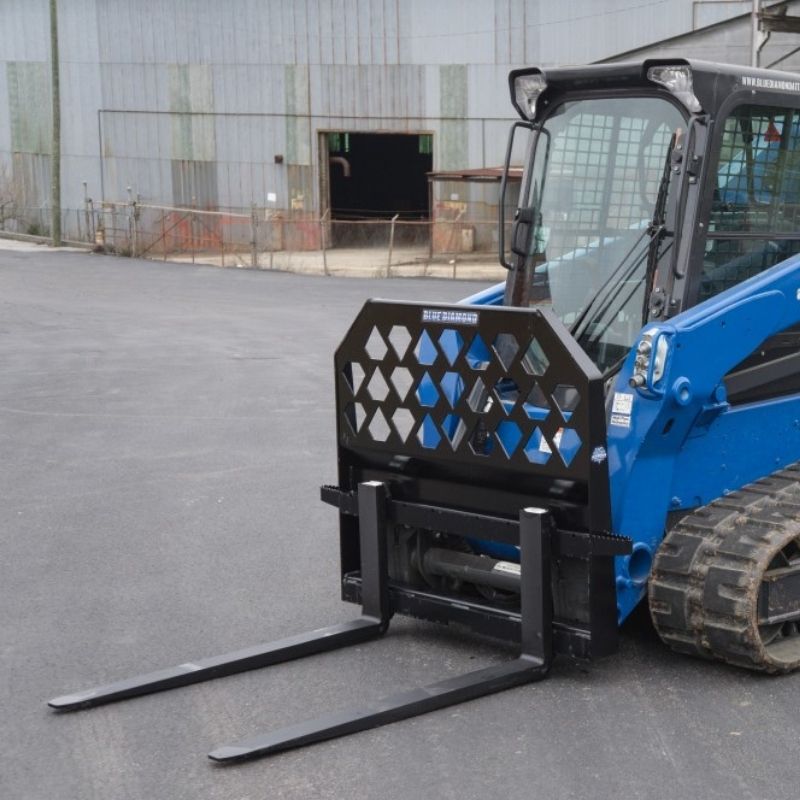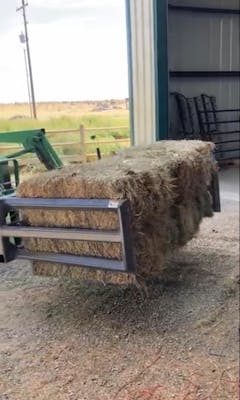Skid Steer Pallet Fork Attachments
Discover durable skid steer pallet fork attachments designed for heavy lifting and material handling. Perfect for construction, farming, and warehousing tasks.

About Pallet Forks
Skid steer pallet forks are essential attachments for lifting and moving palletized loads, hay bales, and heavy materials. Featuring a universal quick-attach system, they ensure easy installation and compatibility with most skid steer models. Built for durability, our pallet forks come in various classes (1–4) and tine lengths (42”–72”) to suit your specific needs, from construction sites to agricultural tasks.
Learn MoreTop Products
- Light Duty Pallet Fork 2000 Capacity: Compact and lightweight with a 2,000-pound capacity and 42” tines, ideal for smaller skid steers and light material handling.
- Berlon Class 2 Medium Duty Pallet Forks 5,500lbs: Offers a robust 5,500-pound capacity with 48” tines, perfect for medium-duty tasks with universal quick-attach compatibility.
- Class 3 Pallet Fork 10,000 Capacity: Heavy-duty forks with a 10,000-pound capacity and 48” tines, designed for large skid steers and demanding lifting jobs.


Applications & Uses
Skid steer pallet forks are versatile tools for a variety of applications, including:
- Moving and stacking palletized materials in warehouses and construction sites.
- Hauling hay bales and feed bags on farms.
- Transporting heavy equipment and materials for landscaping projects.
- Organizing and loading supplies in retail and industrial settings.
Choosing the Right Pallet Fork
Select the perfect pallet fork by considering these factors:
-
Fork Class
Pallet forks come in classes 1–4, with Class 2 (2,000–5,500 lbs capacity) being the most common for skid steers. Ensure the fork and frame class match for compatibility.
-
Tine Length
Choose from 42”, 48”, 54”, 60”, or 72” tines. 48” is standard, but longer tines suit larger loads, while shorter ones reduce operator error.
-
Frame Type
Options include walk-through frames for easy access, low-profile frames for visibility, or high-back frames with brick guards for added protection.
Frequently Asked Questions
-
What is the most common pallet fork size?
Class 2 pallet forks with 48” tines are the most common, offering a balance of capacity (2,000–5,500 lbs) and versatility.
-
Can pallet forks be used with any skid steer?
Most pallet forks use a universal quick-attach system, but check compatibility with your skid steer’s mounting plate and hydraulic capacity.
-
How do I maintain my pallet forks?
Inspect for cracks, bends, or wear regularly. Replace worn tines, clean after use, and store in a dry environment to prevent rust.
-
Are fork extensions safe to use?
Yes, if properly installed and within the skid steer’s load capacity. Ensure extensions are secure and avoid overloading.
-
What safety precautions should I take?
Follow OSHA guidelines, inspect forks before use, ensure loads are balanced, and use brick guards or high-back frames to protect the skid steer.
-
When should I replace my skid steer pallet forks?
Replace pallet forks when you notice significant wear, cracks, or bending in the tines or frame, or if they no longer meet load capacity requirements, to ensure safe operation.






















